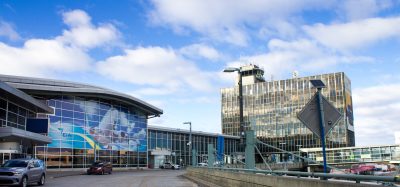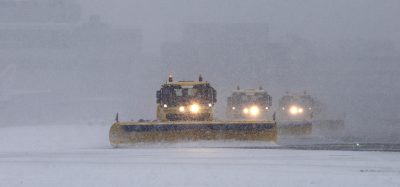Winter operations at Munich Airport
- Like
- Digg
- Del
- Tumblr
- VKontakte
- Buffer
- Love This
- Odnoklassniki
- Meneame
- Blogger
- Amazon
- Yahoo Mail
- Gmail
- AOL
- Newsvine
- HackerNews
- Evernote
- MySpace
- Mail.ru
- Viadeo
- Line
- Comments
- Yummly
- SMS
- Viber
- Telegram
- Subscribe
- Skype
- Facebook Messenger
- Kakao
- LiveJournal
- Yammer
- Edgar
- Fintel
- Mix
- Instapaper
- Copy Link
Posted: 31 March 2009 | Alexander Hoffmann, Vice President, Airport Operations, Munich International Airport | No comments yet
Air traffic never stops – even under icy conditions and the heaviest snowfalls, operations continue despite inclement weather conditions. At Munich Airport, one rule never changes: safety comes first. Making sure that there is no danger to aircraft taxiing, taking off and landing at Munich Airport are the winter services of FMG, the airport’s operating company, and EFM, a special company responsible for de-icing and towing operations.
Air traffic never stops – even under icy conditions and the heaviest snowfalls, operations continue despite inclement weather conditions. At Munich Airport, one rule never changes: safety comes first. Making sure that there is no danger to aircraft taxiing, taking off and landing at Munich Airport are the winter services of FMG, the airport’s operating company, and EFM, a special company responsible for de-icing and towing operations.
To ensure that flight operations continue on the airport aprons, taxiways and runways, Munich Airport deploys up to 150 employees of FMG’s winter services, with their special vehicles, on each shift. The taxiways and the two runways, each four kilometres long and 50 metres wide, are continually cleared of ice and snow by a total of 24 airblast sweepers, two spreaders, two so-called multi-deicers and six snow ploughs. Another 75 snow clearing vehicles are assigned to the park positions. In total, the winter services crews are responsible for an area of four million square metres.
The crews are put on the alert by the airport operations department, which is in charge of monitoring the condition of the airport’s operational areas around the clock. In addition to the up-to-the-minute forecasts provided by the German Weather Service, the airport operations duty officers are supported by an ice detection early warning system, that continually retrieves updated information from 17 measurement stations distributed across the airport. However, precise forecasting remains difficult because a temperature change of just half a degree Celsius can turn rain into a heavy snowfall that completely blankets the ground.
Consequently, the airport duty officer must call in the winter service staff early enough to ensure uninterrupted flight operations when snow begins to fall. For environmental reasons, priority is given to the mechanical clearing of traffic operation areas – in other words, physical snow removal. The spraying of a de-icing agent is only necessary when there is a risk of surface icing. On some areas, for instance the roads used by operational vehicles, quartz sand is used as an alternative to de-icing fluids. However, it is not permitted to come into contact with aircraft engines under any circumstances.
On both sides of the runway, reinforced concrete gutters collect the melting fluids as they run off and channels them into holding basins. From there they are pumped in a controlled manner to a nearby water treatment plant.
The Munich Airport winter services can currently draw on a pool of 450 employees. This includes a total of 40 full-time FMG employees who are allocated to winter services and are primarily assigned leadership and supervisory tasks, as well as 40 extra staff employed in each winter period under season contracts. Providing the human resources backbone of the airport’s winter services are farmers and truckers from the immediate vicinity of the airport. At present, the airport relies on 370 of these outside helpers to clear and haul away snow, using as many as 105 of their own vehicles. These are complemented by 24 external vehicles for pulling the FMG airblast sweepers that are used on the two runways.
So far this winter, the airport has not seen a lot of snow. However, the winter services have plenty to do at present. This is because the temperatures have often risen slightly above freezing point before dropping back below it. To prevent moisture from freezing, the staff frequently have to use de-icing fluid.
But there is no comparing this year with the record winter of 2005/06, when the airport was covered with 117 centimetres of snow. An estimated 500,000 cubic metres of the white stuff had to be cleared in 93,000 working hours. That winter was also the most expensive for Munich Airport, with the total bill for winter services coming to 13 million Euros.
However, the work isn’t finished when the aprons, taxiways and runways are free of snow. Winter conditions also affect the aircraft themselves. To cope with these problems, Munich Airport has a de-icing system that is unparalleled among the world’s airports. Among its unique features are its infrastructure and procedures, a comprehensive environmental management and the state-of-the-art technologies implemented in the de-icing vehicles, de-icing pads and recycling facilities.
Aircraft de-icing, a vital task for aircraft safety, involving a high degree of responsibility, is carried out at Munich Airport by EFM. This company was formed in November 1992 as a joint subsidiary of Lufthansa (51 percent) and FMG (49 percent). Services include moving aircraft (pushback and towing), de-icing operations and air conditioning of aircraft. EFM employs 121 people and has a fleet of 23 towing tractors and 25 de-icing vehicles. Each year, EFM moves as many as 138,000 aircraft and carries out up to 13,000 de-icing operations. The company has certification both for its quality management (ISO 9001) and environmental management (ISO 14001).
EFM is capable of de-icing all aircraft types, from small Learjets to the enormous Airbus A380. At Munich Airport approximately 95 percent of all aircraft are de-iced just before take-off, with their engines running at special de-icing pads (the remote areas) at the heads of the runways. Only in certain special cases are aircraft de-iced at their parking positions on the apron. There are three de-icing pads for each take-off direction on the north and south runways, each provided with several de-icing vehicles.
The EFM de-icing fleet consists of 25 vehicles – the so-called polar bears, of which EFM uses three types: the Elephant My, the Elephant Beta and the Elephant Beta-15. They are all designed for one-man operations. The de-icing specialist can operate and move the entire vehicle from the de-icing cabin. The Beta-15 is extremely high and is thus suitable for de-icing very large aircraft. Its nozzle has a maximum reach of 23 metres – four metres further than the Beta.
To de-ice an aircraft, EFM sprays it with glycol-based de-icing fluids. Type I de-icing fluid is mixed with water and applied to aircraft surfaces at a temperature of 85 °C. It is used at sub-zero temperatures both for de-icing and anti-icing. Type IV de-icing fluid is sprayed onto the aircraft undiluted and cold. If there is any form of freezing precipitation, both types of de-icing fluid are required. First the aircraft is de-iced with Type I to remove all frost, ice, snow or slush. Next, Type IV is sprayed on the cleaned surfaces for anti-icing, to protect the aircraft against the formation of new ice before take-off.
The remote areas are provided with a recovery system for de-icing fluids. EFM recovers up to 60 percent of the used recycling materials. They are treated at the airport’s recycling facility to produce new de-icing fluid. This recycling process covers up to 70 percent of EFM’s annual requirements for Type I de-icing fluid.
Because of the proximity of the remote areas to the runway, they also have the advantage that aircraft can take off within the shortest possible time after being de-iced. This minimises the possibility that the hold-over time for the de-icing fluid will be exceeded, which necessitates a repeat de-icing operation. Remote de-icing ensures safety, saves time, reduces costs, limits the quantity of de-icing fluid used and protects the environment.

















